 Masayuki Ino thinks he is a humorous guy. His entourage agrees, for the most part, coming to a consensus that he is a “serious-funny” individual. But when one’s sense of amusement materialises in a collection that reverberates an ethos of vim, vigour and vitality, perhaps humour should not be a quality to be taken too lightly.
Masayuki Ino thinks he is a humorous guy. His entourage agrees, for the most part, coming to a consensus that he is a “serious-funny” individual. But when one’s sense of amusement materialises in a collection that reverberates an ethos of vim, vigour and vitality, perhaps humour should not be a quality to be taken too lightly.
Doublet founder Masayuki Ino is not too different from most. He goes for jogs and enjoys a good breakfast. He has a favourite TV show and childhood memory — Japanese comedy Downtown and Tokyo Disneyland. But it is perhaps what is done with this appreciation for the world that sets the first Japanese LVMH prizewinner apart.
On the surface, Ino uses Doublet to gratify with a palpable levity, a trait which he brings to the conversation. Ino and his brand lie proximally close on the humour spectrum, a fair evaluation when the Japanese designer incessantly and consecutively salutes “hello” five times to elicit a laugh. Throughout his 30-minute conversation with Men’s Folio, not more than three minutes go by without laughter. While he sobers into pensiveness when his quoted “bottomless well of inspiration” is brought up, the tension is soon broken with an endearing burst of hysterics, as he admits, “I don’t remember answering that, honestly.” And when asked if — one of Ino’s heroes — Jeremy Scott’s departure from Moschino is concerning for the community of humour-informed designers, he animatedly interjects. “I want to take over [laughs],” he says, before quickly retorting, “joke, joke, joke!” Ino resets to state that Scott’s departure does not affect him and that he, in fact, would not mind taking on a creative directorial position at a larger house, but it “depends on where”.
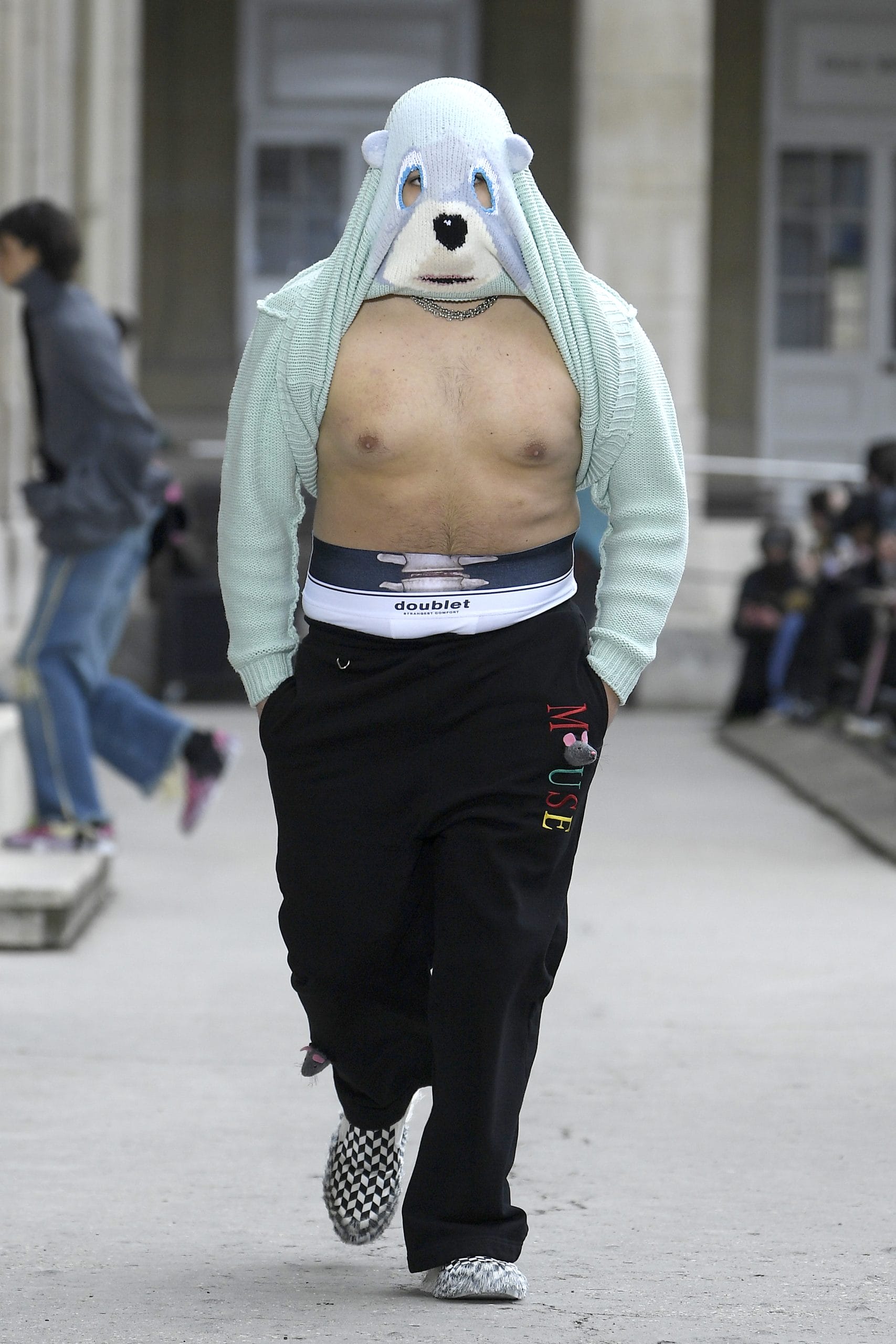
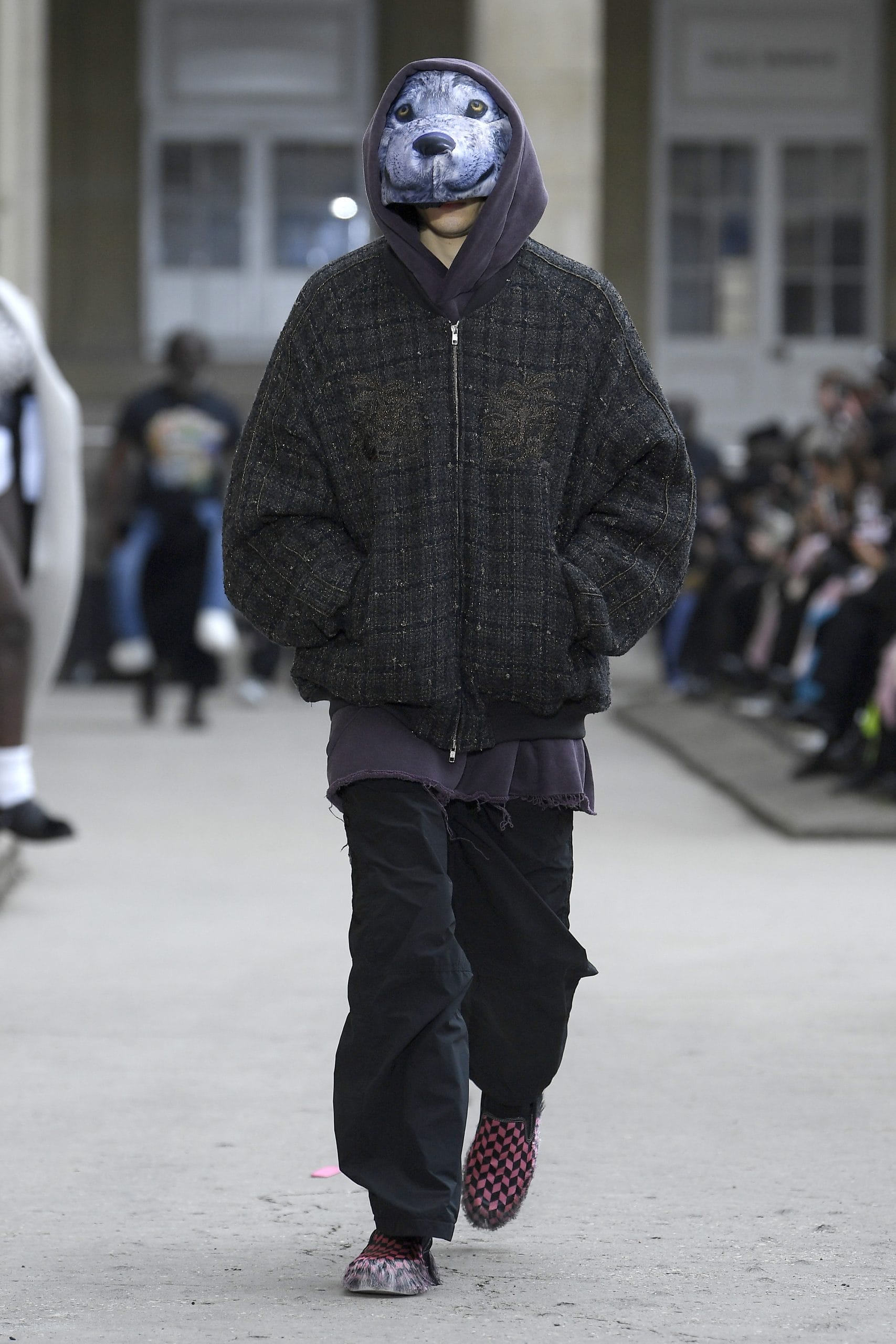
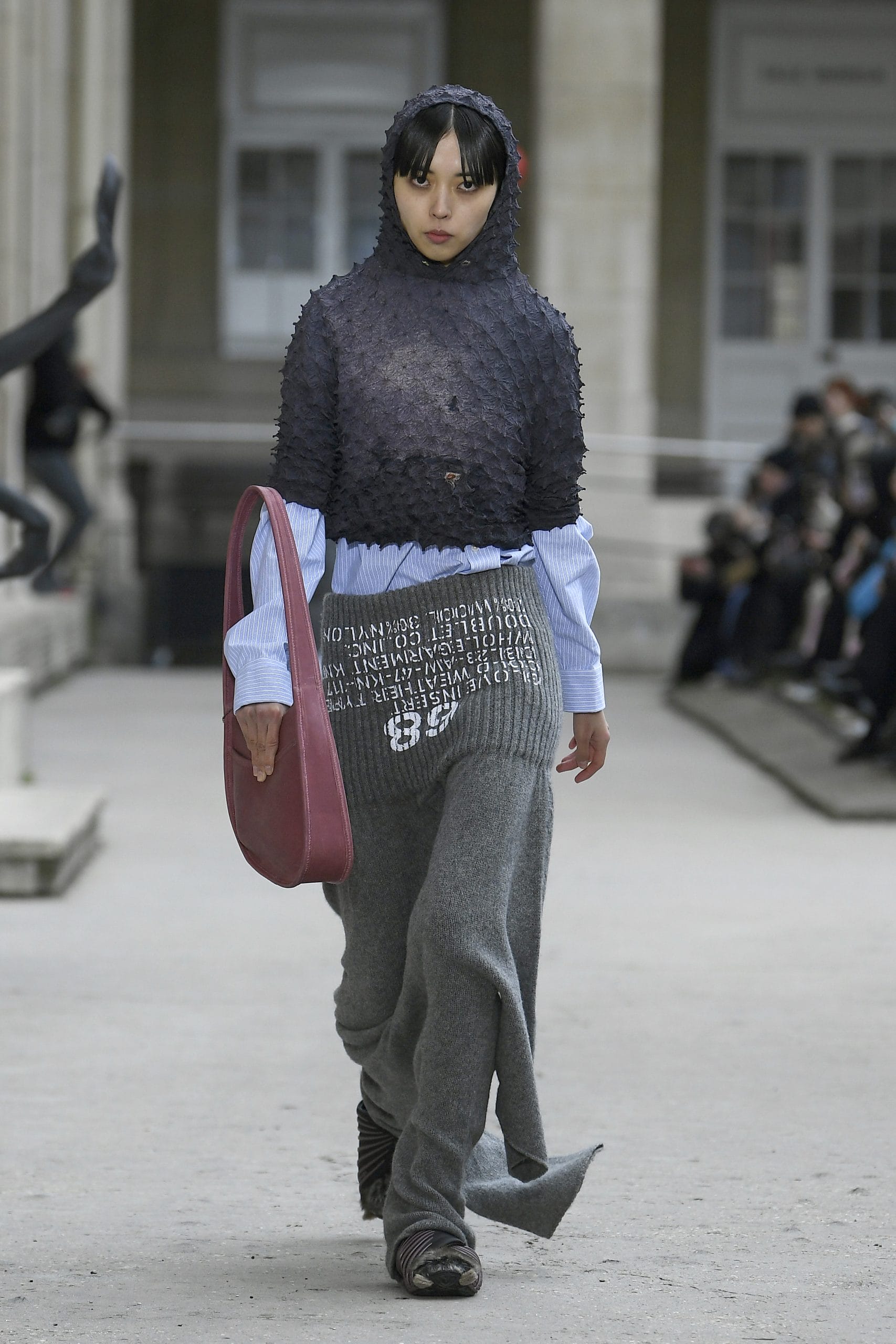
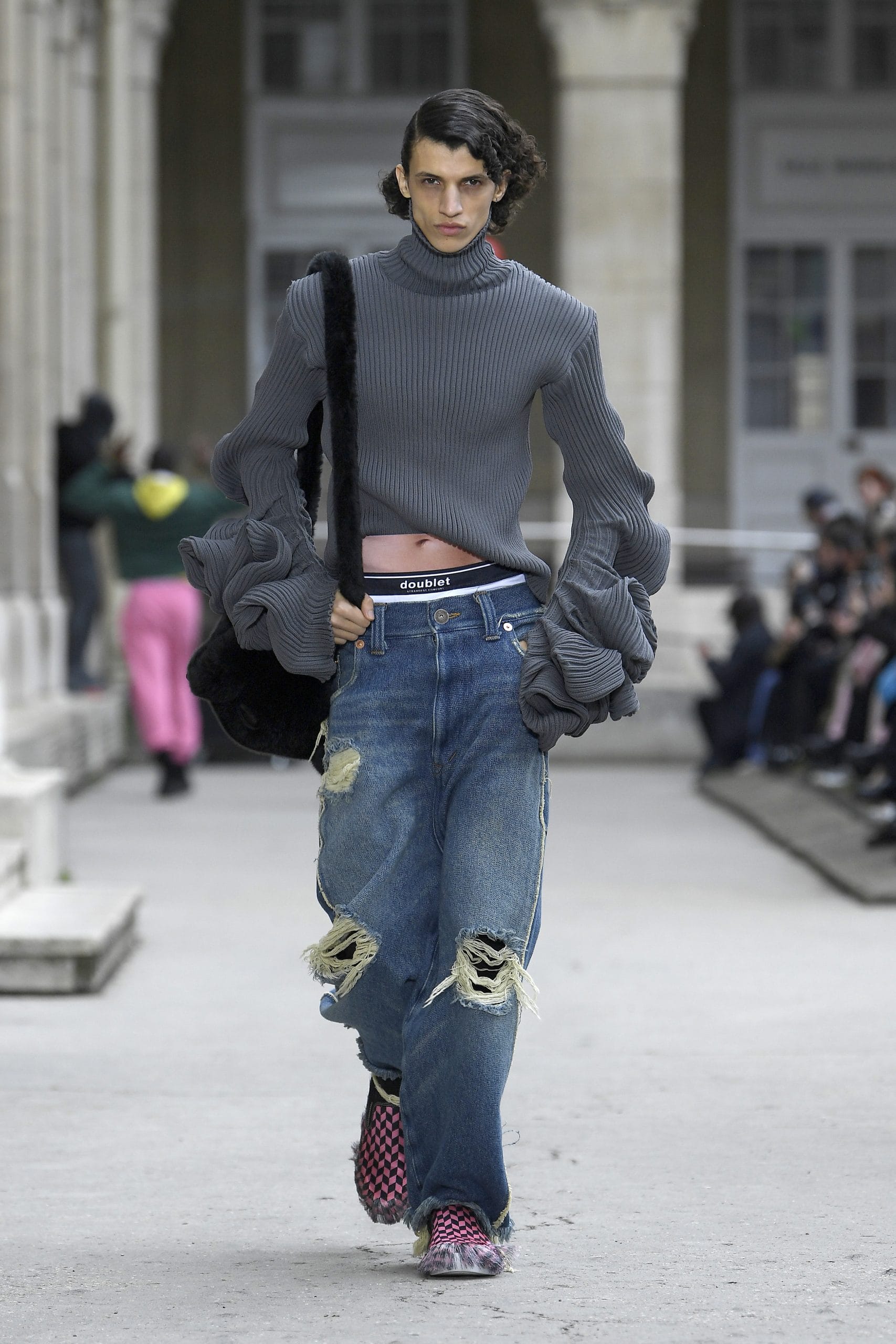
But Ino does not joke when it comes to his brand. He enthusiastically boasts about Doublet’s latest store space at COMO Orchard and its installation, which was conceptualised and then built by the team, including himself. “It’s surreal and exciting for us. We’ve never done a show in a shop,” referring to the trunk presentation staged in coordination with Club21.
He emanates a casual candour that runs salient throughout the brand’s narrative. The clothes are almost always fun and always fresh with invention. There was the memorable Nissin Cup Noodle collaboration of 2021, where the clothes were packed in disposable packaging, mimicking that of Nissin’s. The Fall/Winter ’22 runway show saw models sport near-identical rubber masks and wigs to emulate Japanese AI influencer imma’s appearance. For Fall/Winter ’23, though, Doublet returns with “Monsters”, inspired by amusement park images. Mascots run rife in the capsule, but a mature cognisance grounds the collection to personify the duality and accord of both juvenile whimsies and darker, nightmare-akin realities.


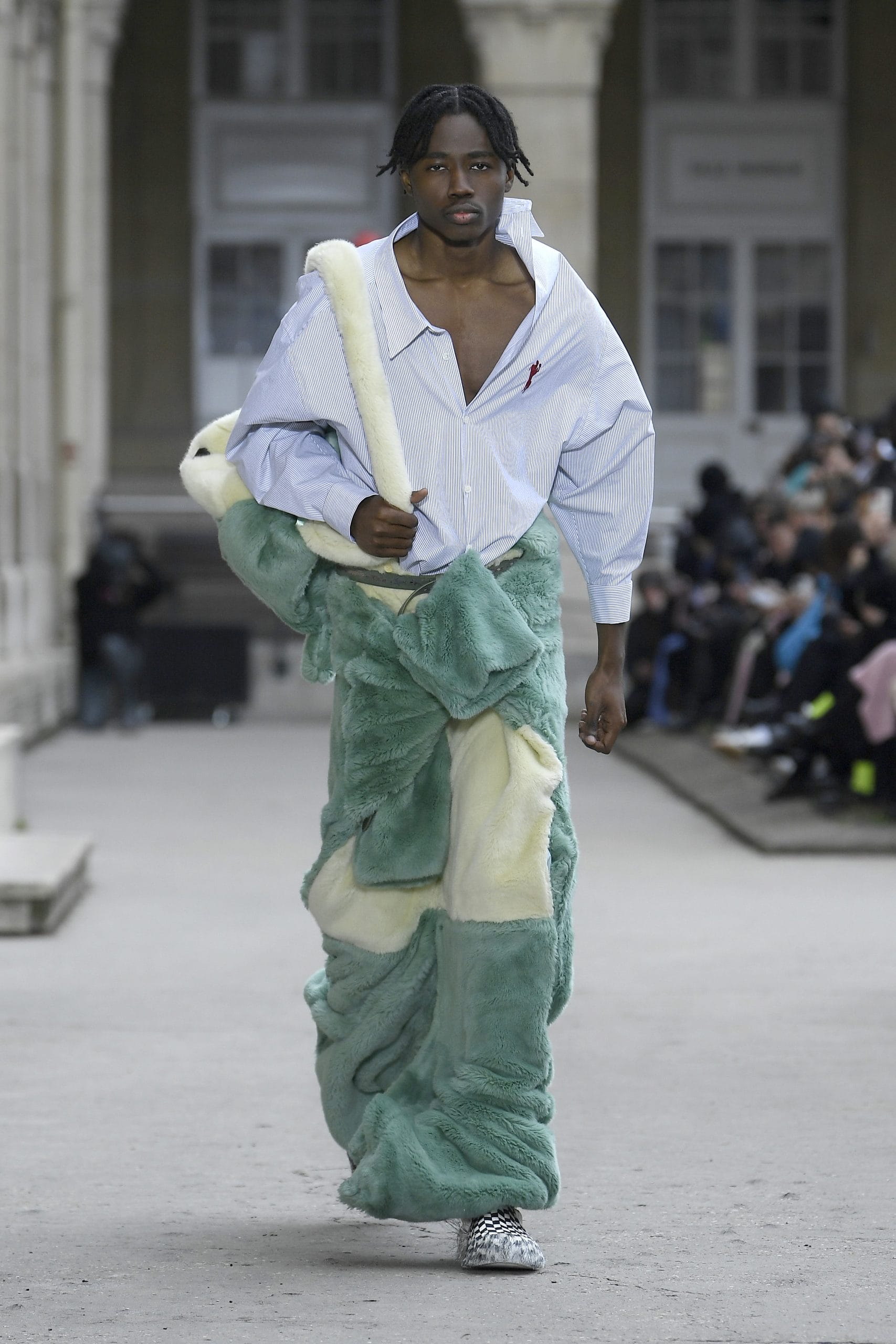
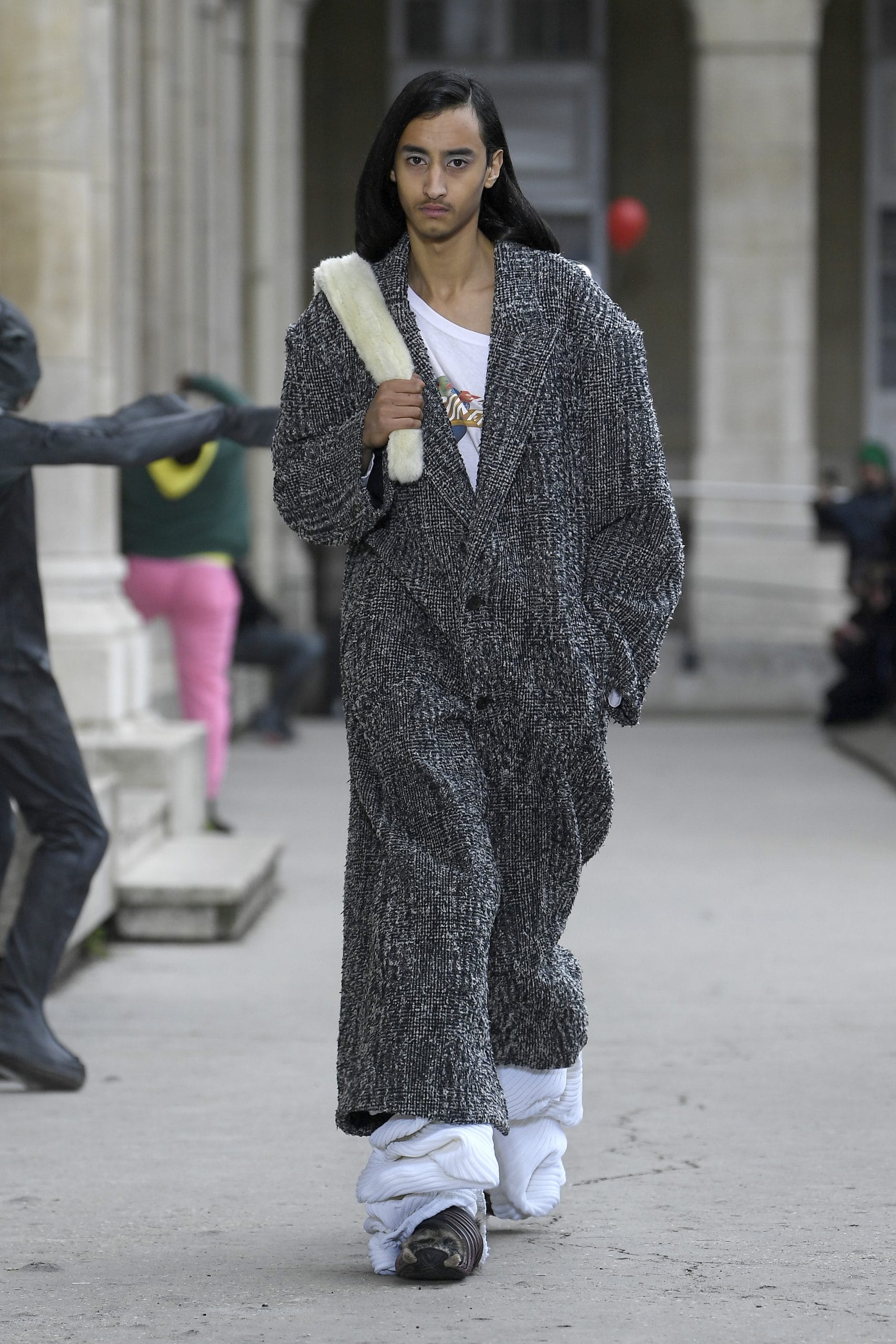
“Monsters” materialised after a friend’s child introduced him to Beastars. The manga centres around a rabbit and wolf’s romance — and naturally, an ensuing, progressive trepidation of a prey getting consumed by a predator. It is rather unorthodox, but when asked about his itinerary for his Singapore trip, Ino states, “I wanna see hell tomorrow.” He refers to Haw Par Villa, Singapore’s theme park dedicated to realist depictions of the afterlife.
“My clothes can be worn by animals, even,” he boasts on the inclusivity of his designs. Doublet has grown to offer a sense of intriguing diversity — instead of offering 20 sizes, the brand only offers one. The philosophy is radical, yet the designer holds steadfast to this. He does not have an impression of the typical Doublet customer and asserts that he does not “design for any specific model, gender or sexuality.” Instead, he takes pride in having amusement as a facet of his design. “It’s important to be happy and to enjoy yourself,” he says, “comedians have their way of doing their job and entertaining, and so do we.”


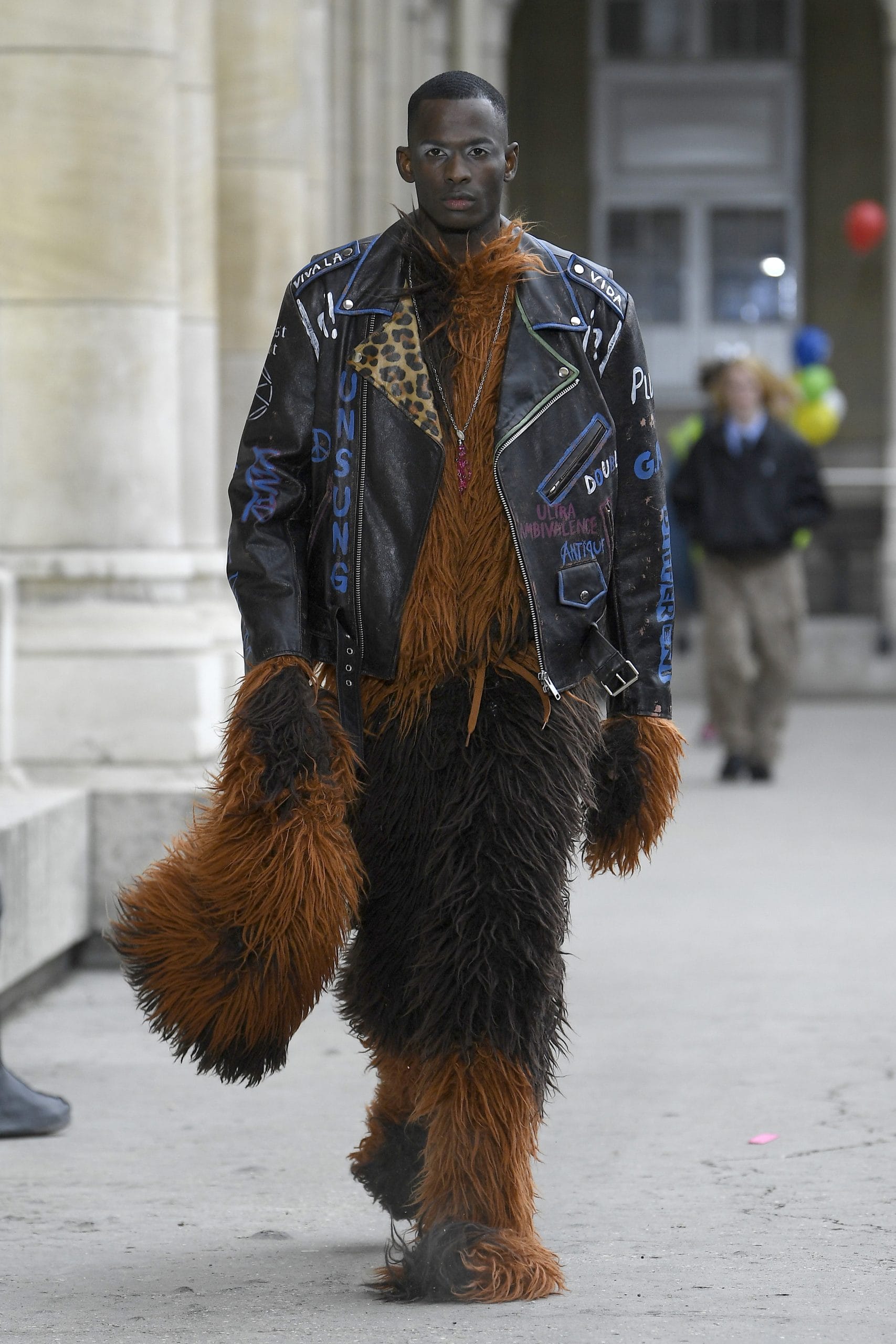
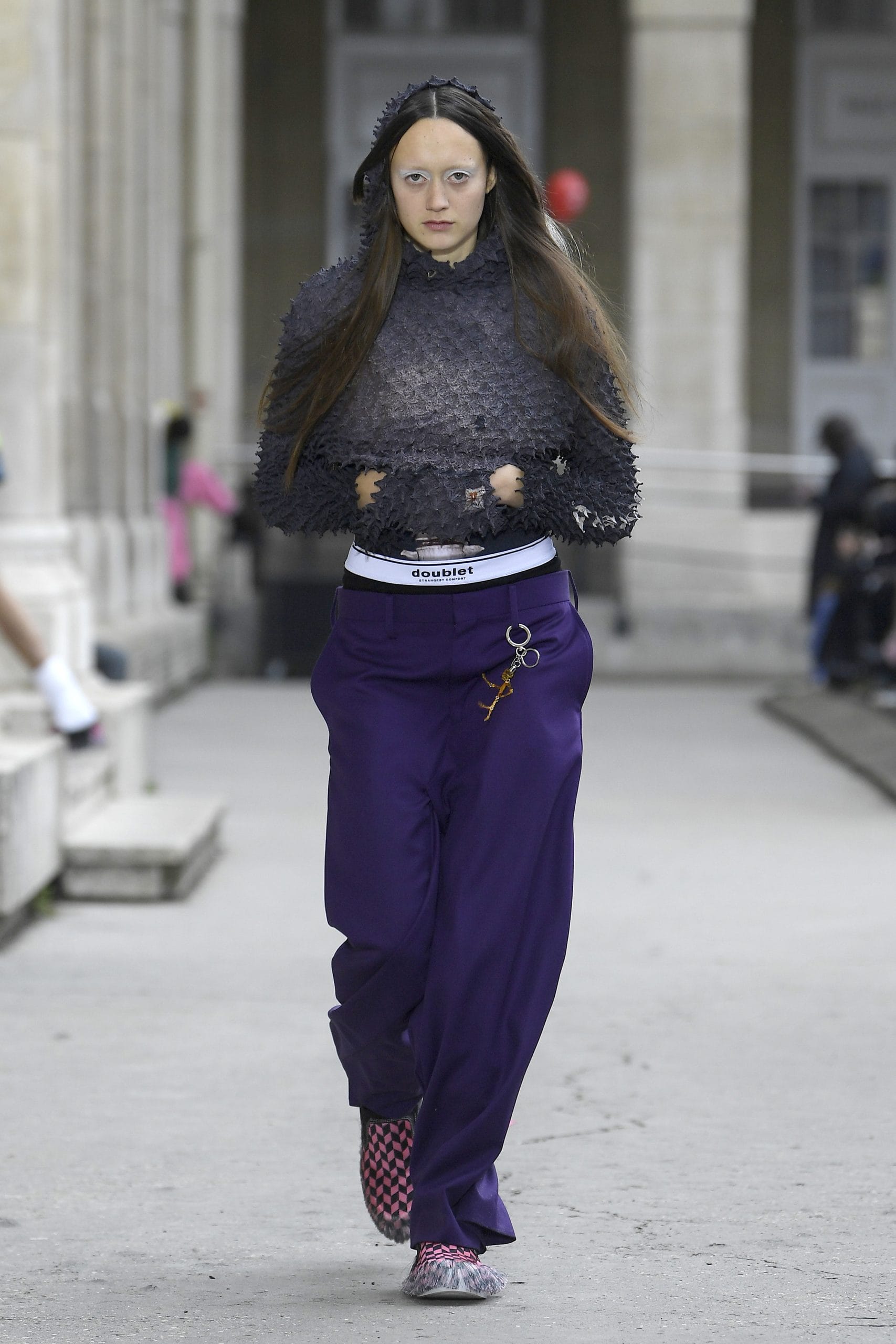
“Doublet is a fun brand, and while humour [is one of] our key concepts and is good for the world to get to know us, we do have a theme every season, and I hope that people can understand that while appreciating the humour.” The larger picture of “Monsters” can also be traced back to Beastars. Ino relays that he has learnt a lot from the two-season Netflix series, which touches on the cultural division that he relates to societal racism, though race is not explicit in the animal kingdom.
But there is also a quality of genuine discipline observed in Ino. The designer expectedly cites the pandemic and followed by his LVMH prize win as turning points in his career. He makes it clear that creativity was not stunted, per se, but the two instances were pivotal in growing his pragmatism. “Before [the win and pandemic] I was like, I want to do this, and I want to create what I want to create, but now, I’m designing based on what I want to express.”
Production challenges were also growing pains for the brand. Naturally, COVID-19 impacted this, but Ino expands on his renown for ambitious innovation. “There was eco-leather made [from] mushrooms. It was really nice in texture and colour, and we used that to create a biker jacket. It was fine during summer but started cracking during winter due to Japan‘s climate. We couldn’t sell it as a result, but because of that experience, our leather is improving. Trials are important for us to keep improving.”
And when asked if he thinks novelty will ever wear out, Ino gets poignant. “What is important is believing in yourself and what you do. That will automatically differentiate you from the others without you having to do something different. Focus on what you want to do; that becomes your characteristic and your uniqueness.”
Once you’re done with this story, click here to catch up with our November 2023 issue!
RELATED ARTICLES

Fourth and Gemini On What Lies Beyond a Dream






